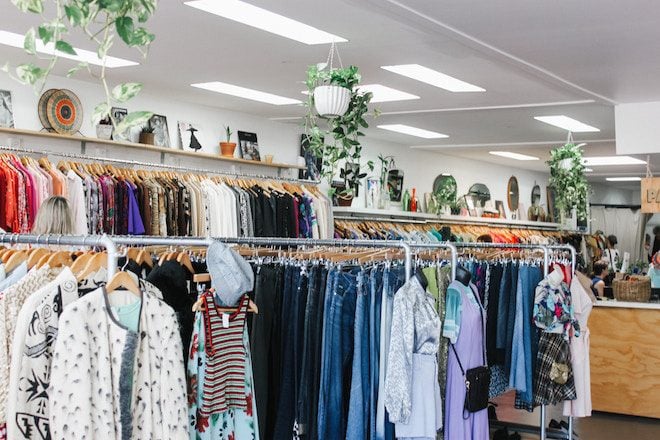What You Need To Know If You Want An Eco-Friendly Wardrobe
This stuff gets confusing, quick.

You’d need some kind of compass to help navigate the ethics of buying clothes and shoes in 2018. It’s downright confusing. The most affordable things are often linked to slavery in supply chains, and the most animal-friendly products are often coming to you via massive travel miles.
Measuring Fashion, the first scientific report into the garment industry, found that if the fashion industry continues to run “business as usual” then by 2030, the impact on the climate is set to increase by 49 percent. The population is growing, online shopping is easier than ever, us students aren’t getting richer, yet the thirst for great threads persists – so it’s looking like fast fashion is here to stay.
It’s time to choose our fabrics with a criterion that’s not just “feels nice” and “is cheap”. Here’s a brief guide on what to keep in mind instead.
Consider The Fabric
Faux-Fur
We’ve come a long way from the fluffy elite being smeared with red paint on the runways. In 2017, Gucci actually declared that real fur “is not modern”, leading to the major luxury brand signing up for the Fur Free Alliance. For a lot of people, wearing fur is a huge no-no in the name of animal welfare. Yet in terms of the environmental impact, at least real fur is biodegradable.
Fake fur is usually made from polyester, which is typically non-biodegradable. Faux-fur has transformed from itchy and tacky to really quite luxe and affordable over the past decade, making it a very appealing option on the market. However, the production of polyester is pretty widely criticised for its toxic environmental damage.
Polyester is essentially plastic derived from petroleum spun into threads. Not only is polyester hardly biodegradable, the process of dying such a stain-resistant fabric means that the pink fluffy coat you have was likely made with disperse dye, which is no friend of the environment. Once excess disperse dye hits the waterways, it’s really hard to treat because of the complex molecular structure necessary for penetrating polyester. Its non-soluble nature presents a toxic risk to the environment.
Basically, you’re not taking a more ethical route just because you’re opting for faux-fur over the real stuff.
Cotton

The cotton industry is one of the most water-intensive textile farming activities. It will take about 20,000 litres to produce one kilogram of cotton, the amount needed for a pair of jeans. As the most wide-spread, profitable non-food crop – cotton’s environmental impact can’t be ignored.
Not only do all of those crops need water, they need to be kept safe from pests and the like. Despite cotton only taking up about 2.4 percent of the world’s cropland, it accounts for 24 percent of the global sales of insecticides, and 11 percent of global pesticide sales.
Fortunately, organic cotton is now being picked up by global fashion giants like Zara and H&M. Using less toxic chemicals, a more efficient nutrient-soil replenishment system, and less water, organic cotton makes for a great emerging option. Regrettably, it only amounts to one percent of the global annual cotton harvest. If you have the choice, go for organic all the way.
Hemp
Unlike cotton, hemp hardly needs the help of chemicals to ward off threat. Thanks to its cut-throat approach to survival in the fields, it chokes out any other weeds before pesticides are really needed.
Hemp is known to feel softer and softer after each wash and would never require dry cleaning. The fabric takes well to dye too, which means you get the best colours at the lowest environmental damage. And it’s super breathable!
You’ve heard all about microfibers in the oceans. All fabrics will release fibres, especially when they’re on a spin cycle. The difference is, some fibres will biodegrade, and others will make their way into delicate marine ecosystems and stay there. So a polyester shirt is likely to shed something nasty that could end up in the gut of a fish, but hemp’s fibres break down. Safe to say, it’s a relatively good’un.
Treasure, Don’t Trash
Seeing as the textile industry is the second most water-polluting industry, it’s a good idea to open up your wardrobe and consider what you really need to buy next – if anything!
The key to shopping in an environmentally friendly way is to shop sparingly and treasure what you own. Knowing some of the major players on the fabric market helps to make you an informed shopper – and that’s a bigger environmental statement than most people can make.